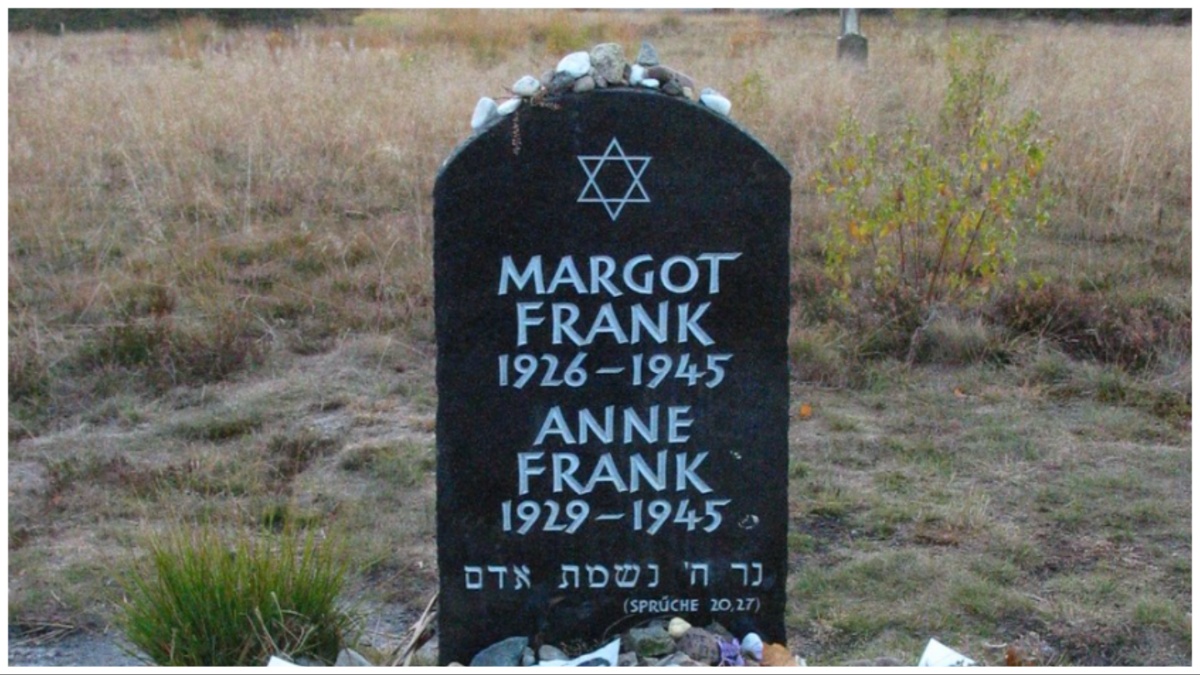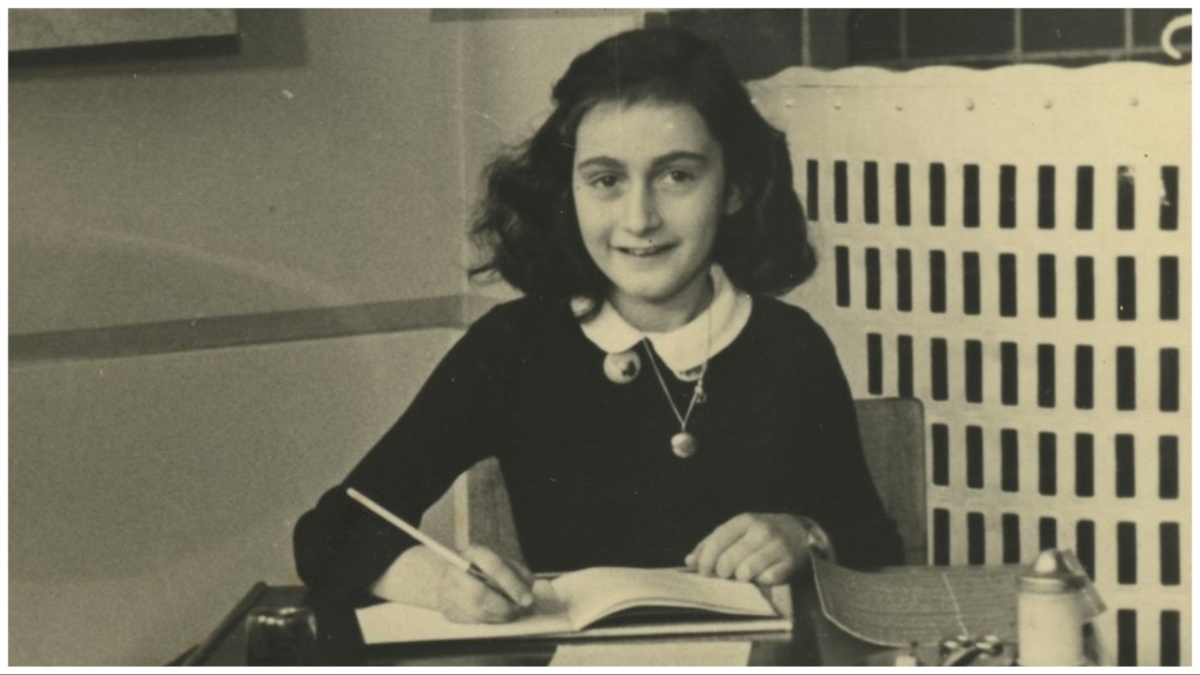If you don’t know who she is, then there’s a very good chance you’ve at least heard the name Anne Frank. Most of us learn all about her in grade school. The diary she kept as a young teenager serves as an important historical record of WWII and the Holocaust, and how the German Nazi regime treated the Jews, and how they tried to eradicate a whole people. A lot of people know her story in the attic, but what happened after?
Simply by describing her everyday life while hiding from certain death in an attic in Amsterdam, Anne Frank used what she had to defy what must have been pure terror. Feeling hunted, scared, trapped and all the other emotions surely coursing through her young mind, Anne Frank created a record for generations and generations to come about the evils of the world. Heroes come in all shapes and sizes. Anne is one of the most unorthodox, but also one of the most important.
Anne Frank, from the beginning

Anne Frank, full name Annelies Marie Frank, was born in Frankfurt am Main, Germany, to Otto and Edith Frank on June 12, 1929. From then until she was five years old, she lived on the outskirts of Frankfurt with her parents and her older sister, Margot. For context, conditions in Germany in this period were looking pretty bleak. The country was economically devastated after losing WWI, and many Germans became angry and eager to take the nation back to what they felt was its former glory and power.
Adolf Hitler and the Nazi Party successfully manipulated this anger, using propaganda to frame Jews, Marxists, and those who signed the armistice and subsequent Treaty of Versailles as traitors of Germany. In 1933, the same year the Nazis seized power after a campaign of terrorist violence and Hitler was appointed Chancellor, Otto Frank relocated from Germany to the Netherlands, where he hoped to establish himself, and bring his family out of the reach of danger. He even started a business trading pectin, which is a gelling substance for jam. The rest of the Frank family, including Anne, first stayed with grandparents before reuniting with Otto in Amsterdam in February of 1934.
In 1940, Germany invaded the Netherlands, and Amsterdam came under occupation by the Third Reich. By the start of 1942, the Germans were forcefully deporting Jews to concentration camps in the East for extermination. In July of 1942, the Franks were forced to go into hiding. They lived in a secret apartment on 263 Prinsengracht Street, located near Otto’s business offices. Anne called the location “the Secret Annex.” Eventually, the Franks were joined in their hiding place by four other Jewish refugees; Hermann, Auguste, and Peter van Pels, and Fritz Pfeffer.
It was during this period that Anne kept a diary detailing her thoughts, dreams, fears and experiences while hiding from the Nazis. Anne’s diary is a first-person account of what it was like to be a child amid the horror of the Holocaust, making it one of the most important historical documents of all time.
It’s not a happy tale. The diary starts on her thirteenth birthday, on June 12, 1942 and ends right after she turns 15. It starts in a pretty typical teenage way; Anne has crushes, enjoys her friendships, and wants to do well in school, at the Jewish Lyceum in Amsterdam.
Inside the annex, Anne, her family, and the others huddle together and listen to the radio for any signs of changes in the war. Sometimes news snippets make it into the diary, and often Anne expresses her isolation and loneliness. She wishes her mother was more loving, but she adored her father.
As she ages, Anne’s writing becomes more profound, and sometimes she muses on human nature in general. She struggles with identity, since her German citizenship was revoked. She feels a kinship toward her fellow Jews, but she also longs for an identity away from it. The diary ends suddenly and without warning, on August 1, 1944.
The Frank family were discovered and arrested on August 4, 1944. So what happened next?
What happened to Anne Frank after the Annex?
The ending of Anne’s life was not a pretty one. Given what she suffered at Auschwitz, it really does clash with the sentiment that “people are really good at heart,” which she wrote in her diary. For a long time, no one really knew what happened to her after she left the annex, but in 1988 a Dutch television show called The Last Seven Months of Anne Frank answered those questions.
The documentary spoke with six women who actually met Anne before she died. Frank was transported to Auschwitz-Birkenau in a terrifying summer when more than 400,000 Hungarian Jews were murdered in gas chambers. Since the Franks were in relatively good health, they were selected for labor duty, and not immediately put to death.
Survivor Ronnie Goldstein-van Cleef said Anne “often stood next to me” during roll call, and she remembered sipping coffee with her from a single cup with four other women. “Anne was very calm and quiet and somewhat withdrawn. The fact that they had ended up there had affected her profoundly – that was obvious,” Cleef said.
The Frank sisters suffered from skin mites and scabies, something that ran rampant in the camp. Even worse, Anne and her sister were confined to a barrack where everyone else had scabies, and away from their mother. “The Frank girls looked terrible, their hands and bodies covered with spots and sores from the scabies,” Cleef said in the documentary. “They were in a very bad way; pitiful – that’s how I thought of them.”
The barracks was a volatile and scary place, where women would throw “themselves against the electric fence,” per survivor Lenie de Jong-van Naarden. Anne and her sister were moved west to Germany in 1945 as the Russian Army advanced into Poland. Their mother, Edith Frank, died of grief after being left behind. Anne’s final home was Bergen-Belsen, on an isolated heath in the North of Germany.
The camp was severely overcrowded as people kept arriving from other places, and it was a haven of disease. Mass graves were filled over and over again in the new camp, and it’s believed that’s where Anne ended up. Both Anne and her sister Margot were believed to have died of typhus, and one survivor described them as having “hollowed-out faces, skin over bone.”
Survivor Janny Brandes-Brilleslijper gave the most detailed recollection of Anne’s final days.
“She didn’t have any more tears, and she told me that she had such a horror of the lice and fleas in her clothes and that she had thrown all of her clothes away. It was the middle of winter and she was wrapped in one blanket. I gathered up everything I could find to give her so that she was dressed again,” said the survivor. Anne died three days after she threw away all her clothes from terrible typhus-related hallucinations. “That happened just before the liberation,” Brandes-Brilleslijper recalled.

